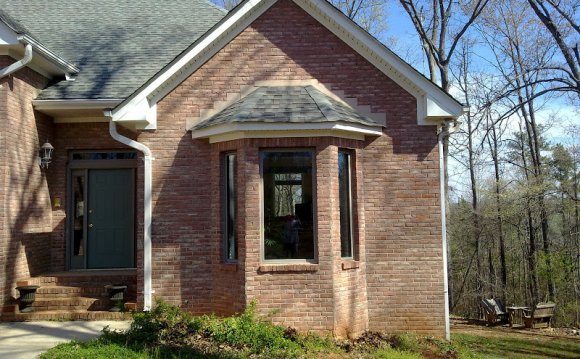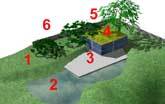
 Landscape PLANNING: Definitions Planning Agriculture Context theory Cycling EID Forestry Green Towns Greenways Landscape plans Minerals Parks POS Reservoirs Rivers Sustainability Transport Urbanisation Books on landscape planning Links
Landscape PLANNING: Definitions Planning Agriculture Context theory Cycling EID Forestry Green Towns Greenways Landscape plans Minerals Parks POS Reservoirs Rivers Sustainability Transport Urbanisation Books on landscape planning Links
Landscape has six main compositional elements: Landform, Vertical Structures, Horizontal Structures, Vegetation, Water, Climate
Landscape Design is the art of arranging these elements (see diagram, right) to make good outdoor space.
Garden Design is a specialized branch of Landscape Design, concerned with private space and private goods. The difference between the two arts is that one is concerned with private space and one with public space. The public park is an area of overlap - and the origin of the landscape architecture profession.
Landscape Designers influence Natural Processes, Social Processes and Aesthetic Processes. Their aims and objectives can also be placed in these three groups. Outdoor space which is 'good' from one point of view (eg social) may be bad from another point of view (eg aesthetic or natural process). A space can also be good for humans but bad for other species (eg a swimming pool with treated water).
Landscape Architecture is an organized profession. Its members have approved qualifications and work on Garden Design, Landscape Design, Landscape Planning and other specialized activities. The relationship between Landscape Design and Landscape Architecture is equivalent to the relationship between the law and lawyers. The term landscape architecture was invented by Gilbert Laing Meason in 1828. 'Landscape architecture' is now recognized by the International Labour Organization and represented by the International Federation of Landscape Architects (IFLA). Most countries have professional associations concerned with landscape architecture.
Planning the landscape is an old idea. Around 1800 John Claudius Loudon (1783-1843) worked as 'a planner (as the Scotch call a landscape-gardener)'. Patrick Abercrombie gave a lecture on Country planning and landscape design in 1934 and wrote that 'the English countryside has been wrought upon by man in the past in such a way that he has created out of nature's raw materials a work of human art, a composition or a picture as we should say of music or painting'. When Brian Hackett used Landscape Planning as the title of a book in 1971, he used it in its modern sense. McHarg's book Design with nature, was by far the most important landscape planning book of the twentieth century. Had he used 'Landscape planning' as the title he would doubtless have advanced the profession and diminished his sales. Arnold Weddle, founding editor of the Elsevier journal Landscape Planning, made a most useful remark in the introduction to his book on Techniques of landscape architecture. He wrote of an activity distinguished from related professions by looking beyond their 'closely drawn technical limits' and 'narrowly drawn territorial boundaries'. This is a distinguishing feature of landscape planning.
The objectives of Landscape Planning are similar to those of Landscape Design but planning projects tend to be
- More concerned with public goods than private goods
- Larger in scale
- Longer in duration
- Implemented by many contracts, rather than one contract
Environmental Impact Design (EID), may be defined as 'the adaptation of a project design with regard to the supply of public goods (social, natural and aesthetic) and the development of multi-objective landscapes'.
The American Society of Landscape Architects (ASLA) gives the following account of the profession on its website: "Landscape architects design the built environment of neighborhoods, towns and cities while also protecting and managing the natural environment, from its forests and fields to rivers and coasts. Members of the profession have a special commitment to improving the quality of life through the best design of places for people and other living things. In fact, the work of landscape architects surrounds us. Members of the profession are involved in the planning of such sites as office plazas, public squares and thoroughfares. The attractiveness of parks, highways, housing developments, urban plazas, zoos and campuses reflects the skill of landscape architects in planning and designing the construction of useful and pleasing projects."
The UK Landscape Institute (LI) gives the following account of the profession on its website: "The Landscape Institute is the national organization in the UK for landscape professionals, comprising designers, managers and scientists, concerned with enhancing and conserving the environment. The Institute makes sure its members give the best possible service in the planning, design and management of open spaces, whether in rural or urban locations. If you are thinking about appointing a landscape architect, see our Directory of registered landscape practices."
Comment: The ASLA account is aspirational. It implies, misleadingly, that landscape architects are the lead professionals in designing 'the built environment of neighbourhoods, towns and cities'. The LI account is vague. It does not explain how landscape architects conserve and enhance the environment.
Notes
(1) The ancient Greeks identified four 'elements': Earth Fire Water and Air. Their concern was with science - not with landscape design..
(2) Pavements could be included within 'structures', giving us only 4 elements, but they deserve separate identification as the 'connective tissue' in the man-made landscape.
HISTORY
Garden Design is an ancient art for which we have records reaching back for more than 4, 000 years.
Landscape Design, as defined above, has a broader history, which is the subject of Norman T Newton's Design on the Land and Geoffrey and Susan Jellicoe's The Landscape of Man and. It differs from the history of agriculture and settlement because these arts are not primarily concerned with compositional relationships between Landform, Vegetation, Water, Paving and Structures.
Landscape Architecture came into being as an art concerned with designing a particular type of building. Later in the nineteenth century, under the influence of Olmsted, it took on its present meaning. The organized profession extended its sphere of involvement from private gardens to public parks and then to a broad spectrum of relationships involving landscapes and architecture, including town planning, transport, parks, forestry, agriculture and mineral extraction.
Environmental Impact Design is a development from America's National Environmental Policy Act (NEPA) of 1969. An Environmental Impact Survey is followed by an Environmental Impact Assessment and an Environmental Impact Design (EID). On development projects, the EID aims to
- mitigate the harmful impacts on the environment
- develop beneficial impacts on the environment
YOU MIGHT ALSO LIKE












